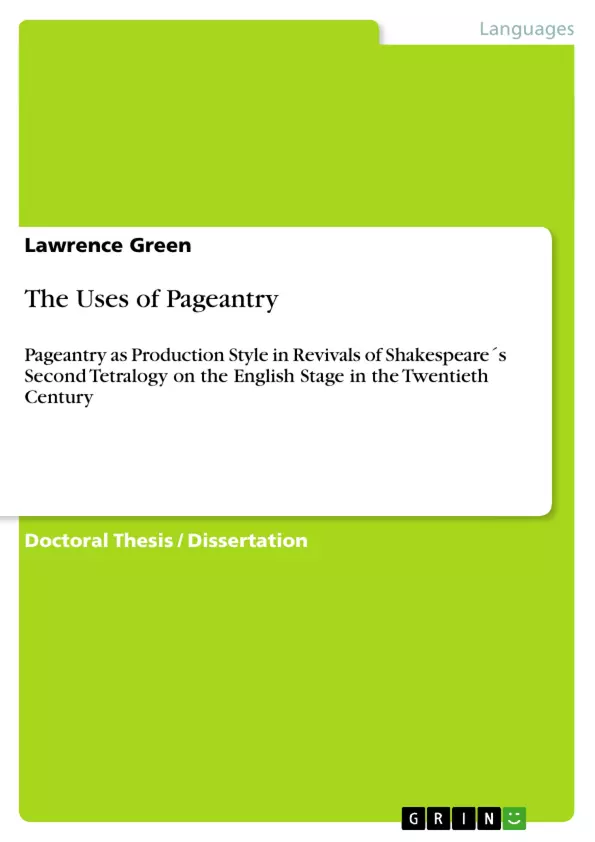An Introductory chapter justifies the study of staged pageantry in terms of related research and acknowledges the aptness of the pageantic mode for the
second tetralogy before glancing at pageantry within the contemporary social context.
A brief survey of pageantry in Shakespearean productions from the Restoration to 1900 provides an historical context for the thesis which shows that
'pictorial' pageantry, though vilified and much reduced in scale compared with Victorian literalism, proved resilient even in the face of the New Stagecraft and cinematic realism.
From the 1950s the intellectualisation of Shakespeare production which accompanied the emergence of the university-educated 'director, however, harnessed spectacle in the service of an interpretative vision that demanded of audiences a capacity for analogical thinking akin to the 'cognitive eye' of Shakespeare's own audiences.
In an era of social flux and intellectual anxiety pageantry has provided a stable vocabulary for interrogating monarchal and political ideologies together with the vocabulary for the examination of the ritual basis of the
human condition.
Subsequently practitioners have utilised the meta-theatrical concept of pageantry and in a society increasingly defined through the visual emblem have sought to reach beyond 'image 1 towards understanding, thereby
reaffirming the need to take theatrical pageantry seriously.
Inhaltsverzeichnis (Table of Contents)
Since this document is an abstract of a thesis, it does not contain a Table of Contents.
Zielsetzung und Themenschwerpunkte (Objectives and Key Themes)
This document is an abstract for a thesis; therefore, the main objectives and key themes are not elaborated here.
Zusammenfassung der Kapitel (Chapter Summaries)
As this is a thesis abstract, it lacks chapter summaries.
Schlüsselwörter (Keywords)
This document does not contain a list of keywords.
- Quote paper
- Lawrence Green (Author), 1998, The Uses of Pageantry, Munich, GRIN Verlag, https://www.grin.com/document/207499



